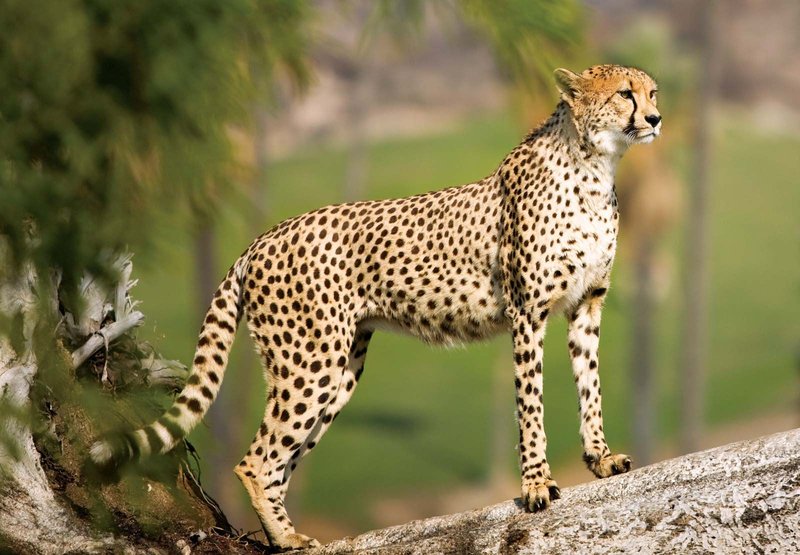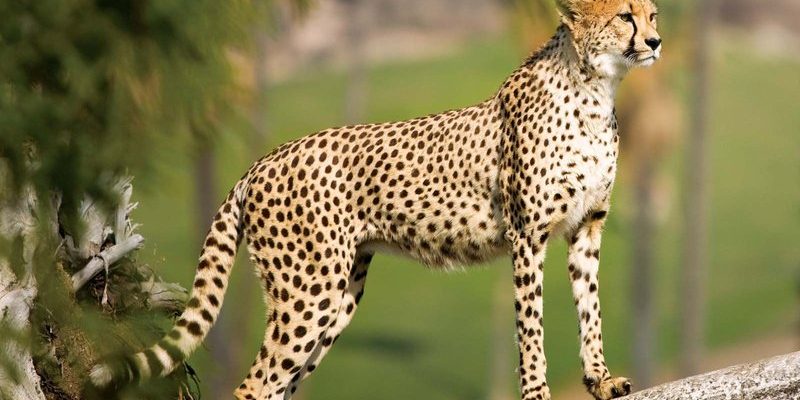
Why should we care about the role of the cheetah in its ecosystem? Well, it’s similar to understanding the importance of a conductor in an orchestra. Without the right balance, things can quickly fall apart. The cheetah, as a top predator, influences not just the prey populations but also the plants and other animals around them. So, let’s dive in and explore why this speedy feline is more than just a pretty face on a wildlife documentary.
Cheetahs and Their Prey
Cheetahs primarily hunt antelope, such as Thomson’s gazelles and impalas. Here’s the thing: by preying on these herbivores, cheetahs help control their populations. Imagine if antelope could roam freely without any natural predators; they would reproduce rapidly, potentially leading to overgrazing. Overgrazing can harm vegetation and soil health, which then affects other animals relying on that flora for shelter or food.
Controlled Grazing is crucial. When cheetahs are present, antelope populations stabilize, ensuring that grasslands can thrive. This balance supports a diverse ecosystem, from insects and birds to other larger mammals. Without cheetahs, we might see an unhealthy surge in antelope numbers, which could throw the ecosystem out of whack. It’s a perfect example of how one species can keep everything else in check.
Top Predator Dynamics
Cheetahs sit at the top of their food chain, but they’re not the only players in this dynamic. Other predators, like lions and hyenas, also share the savannah. The competition can be fierce, and this rivalry can actually benefit the ecosystem. When cheetahs hunt successfully, they help keep prey populations in check, but they also become prey themselves to other larger predators when the opportunity arises.
This competition leads to a healthier species dynamic overall. Cheetahs tend to hunt in open areas to utilize their speed, while lions often target more concealed spots. By interacting with each other in this way, they create a balance that promotes genetic diversity and helps prevent any one species from overpopulating.
Impact on Vegetation
You might be wondering how a speedy predator can influence plant life. Well, it all comes down to grazing. As cheetahs control herbivore populations, they indirectly promote the health of grasses and shrubs. Healthy vegetation is essential because it supports a variety of species, from small insects to larger herbivores and even predators like cheetahs themselves.
Without sufficient plant cover, the ecosystem can suffer. Soil erosion, loss of nutrients, and diminished habitats would follow. Essentially, by keeping antelope numbers down, cheetahs allow more grass to flourish, which in turn supports the entire ecosystem. So, the cheetah is not just a hunter; it’s a crucial player in the story of life on the savannah.
Role in Biodiversity
Biodiversity is about having a variety of life forms in an ecosystem. When cheetahs are part of a healthy population, they contribute to a rich tapestry of life. Their presence affects not just the animals they hunt but also others indirectly connected to those herbivores. For example, if antelope are fewer due to the cheetah’s hunting, plants might thrive, which ultimately supports more species.
Healthy ecosystems are resilient ecosystems. They can bounce back from setbacks like droughts or diseases. Here’s an interesting fact: areas with high biodiversity, including cheetahs, tend to recover more quickly from these stresses. It’s like having a safety net that catches everyone when times get tough.
Cheetahs and Ecosystem Services
Ecosystem services are the benefits we get from healthy ecosystems, like clean air, water, and natural pest control. Cheetahs play a significant role in maintaining these services. By keeping herbivore populations balanced, they indirectly contribute to factors like soil health and water retention.
When cheetah populations decline, the balance shatters. Overgrazing can lead to more dust storms or poor water quality in rivers. The ripple effects can be vast, impacting everything from agricultural practices to human water supplies. It’s a reminder that every creature, no matter how small or seemingly insignificant, has a role to play in the bigger picture.
Conservation Efforts
With all these important roles, it’s critical to protect the cheetah. Unfortunately, these incredible predators face numerous threats, including habitat loss and human-wildlife conflict. Efforts to conserve cheetah populations involve protecting their habitats, maintaining prey availability, and raising awareness about their ecological importance.
Conservation isn’t just about saving one species—it’s about preserving the delicate connections that keep ecosystems thriving. Organizations around the world work on strategies from establishing wildlife corridors to promote genetic diversity to educating local communities about the value of living alongside these big cats.
The cheetah’s role in its ecosystem is more than just about being the fastest land animal; it’s about balance. By controlling prey populations and influencing the landscape, cheetahs contribute significantly to the health of their environment. They remind us that every species plays a part in the complex web of life.
Protecting these magnificent creatures is essential not just for their survival but for the well-being of countless other species that depend on them. So next time you see a cheetah racing across the savannah, remember it’s not just a beautiful sight—it’s a vital thread in the fabric of nature.

